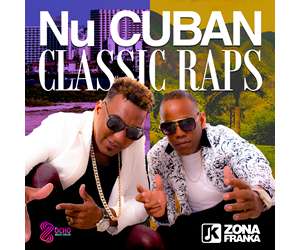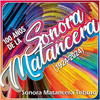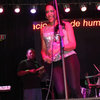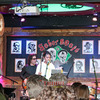Archivo
Lo Nuevo [hide]
Tienda : Test Page 20250825
Reportes : From The St... : Page 1a
Reportes : From The St... : Page 1
Resenas : Test Review MPL
Resenas : Test revew
Musicos : New Musician
Fotos : Tom Ehrlich : test subpage
Fotos : Tom Ehrlich : test 3
Fotos : Michael Lazarus : MPL - New Gallery 1
Tienda : Methods · Métodos
Musicos : Juan Formell
Musicos : Yordamis Megret Planes
Musicos : Yasser Morejón Pino
Fotos Del Día [hide]
Sin Clave No Hay Na
Manuel Valera & NCX (New Cuban Express) CD Release Party
6 November 2013 at the Jazz Standard, New York, NY
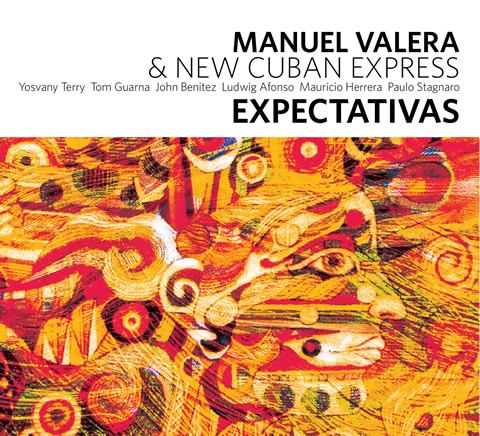
Expectativas, the killer new album by Manuel Valera & New Cuban Express (aka NCX), has been out since September, and if you listen to any of the best Latin Jazz radio programs, you have probably already heard at least parts of it, but other touring obligations of the members (including Manuel's own time in India and Europe) have delayed the official CD release party until now. The first New Cuban Express album brought home a GRAMMY nomination, and this one is as good or better, If you have the opportunity to catch this performance, it is a don't miss. The details:
Manuel Valera & New Cuban Express
November 6, 2013, 7:30pm & 9:30pm - Jazz Standard, 116 East 27 Street, NY, NY
Musicians: Manuel Valera, piano and keyboards; Yosvany Terry, saxophones and checkere; Tom Guarna, guitar; John Benitez, bass; Paulo Stagnaro, percussion; Ludwig Afonso, drums
continue reading Sin Clave No Hay Na
Veni, Vidi, Mambi:
The Pacific Mambo Orchestra Tour Begins in Indiana
We know, "Mambo" wasn't a Latin verb until the 20th Century, but that's Rome's problem, not ours. Bill Tilford endured the Monty Python-esque Chicago Skyway Toll Bridge to catch the Pacific Mambo Orchestra over in Gary Indiana on the first leg of their national tour. He's really glad that he did - Read the review here...
continue reading Sin Clave No Hay Na
Meet Gema Corredera
In January 2013, Cubana Jazz vocalist Gema Corredera, currently a resident of Miami, released a fine new album, Derramando Luz, that is winding its way through the early round of the 56th GRAMMY Awards process. We'll be reviewing it soon, especially since Gema is backed by some familiar names including Yosvany Terry (who is Music Director for the project and co-produced), Yunior Terry, Manuel Valera, Osmany Paredes, Alfredo Chacón and Obed Calvaré. Here is a video clip about the release:
Speaking of Yosvany Terry, congratulations Yos for being awarded the Cintas Fellowship 2013 for composers! More about this in our Movimiento en Miami report, which also features a guest article by Eva Silot Bravo about Danay Suárez this week.
continue reading Sin Clave No Hay Na
CD Reviews: Chuchito Valdés and Timbalive

 The newest recordings from members of the Valdés dynasty are doing well this year. We already reviewed Chucho's Border-Free earlier in the year, and it is currently a Latin GRAMMY nominee (Latin Jazz); Chuchito Valdés also has two recordings currently nominated in the 14th Latin GRAMMY Awards (one in Latin Jazz, one in Folklore in a collaboration with Andean folkloric music legend Eddy Navia.) Here are reviews of Grand Piano Live and Carnaval En Piano Charango.
The newest recordings from members of the Valdés dynasty are doing well this year. We already reviewed Chucho's Border-Free earlier in the year, and it is currently a Latin GRAMMY nominee (Latin Jazz); Chuchito Valdés also has two recordings currently nominated in the 14th Latin GRAMMY Awards (one in Latin Jazz, one in Folklore in a collaboration with Andean folkloric music legend Eddy Navia.) Here are reviews of Grand Piano Live and Carnaval En Piano Charango.
 Bill Tilford doesn't doubt for a moment that the following statement will start a few fights, but in his opinion, Timbalive's new Con La Música Cubana NO! is not only Timbalive's best album, but also the best wall to wall Timba dance album (as opposed to Timba plus other things mixed in) to be released by a band based in the United States in many years. Here's his case, before anyone else makes theirs, please actually listen to the album first...
Bill Tilford doesn't doubt for a moment that the following statement will start a few fights, but in his opinion, Timbalive's new Con La Música Cubana NO! is not only Timbalive's best album, but also the best wall to wall Timba dance album (as opposed to Timba plus other things mixed in) to be released by a band based in the United States in many years. Here's his case, before anyone else makes theirs, please actually listen to the album first...
While we're here, congratulations to Miami's Leslie Cartaya for her Best New Artist nomination in the 14th Latin GRAMMY awards. We reviewed her eclectic solo debut CD, No Pares, a few months ago. She would be known previously to fans of the Afro-Cuban Funk band Palo!
continue reading Sin Clave No Hay Na





